A typical sporting event reads like a children’s book. See Team A take ball. Ball goes in goal. Team A wins. Go team go!
On the other hand, the Tour de France presents itself as an epic Tolstoyan saga, spanning 21 days with nearly 200 characters and myriad storylines. It’s no wonder the casual sports fan is befuddled when cameras cut to the French countryside every summer.
If you’ve just gotten the bug for riding road bikes, or have always been puzzled by the daily deluge of Tour de France news, this beginner’s guide is for you. We’ll cover the fundamentals of how this “game” is played — and there are many ways to play it and win. Also, we’ll delve into cycling’s paradoxical balance between being simultaneously a team sport and an individual sport. That plays into the finer points of strategies and tactics. Finally, most importantly, we’ll explain how to successfully, enjoyably watch the Tour, without dying of boredom during a six-hour flat stage across plains of central France.
If you’re a seasoned cycling fan, please feel free to share this with your curious in-laws who always email you questions about pelotons, yellow jerseys, and more. We’ve all been there before!
The 2022 Tour de France will be raced from July 1st to July 24th over the course of 21 stages with two rest days along the way.
Contents
- How The Tour de France Works
- How To Win The Race
- How To Win If You Don't Win
- Points Classification - Green Jersey
- King Of The Mountains Classification - Polka-Dot Jersey
- Other Prizes
- Best Young Rider Classification - White Jersey
- Best Team Classification - Yellow Helmets
- Most Aggressive Rider - Red Number
- An Individual Sport With Teams - Or Vice-Versa
- Three Tips To Watch Like A Pro
[button]Shop road bikes[/button]
How The Tour de France Works
21 stages over 24 days, 3,328km distance traveled (2,067mi because America), and over 48,530m of total elevation gain. A very casual month of cycling in Europe, to say the least.
The Tour de France has A LOT of moving parts; it is not simply an individual effort to cross the finish line first. Racing the Tour de France requires a combination of teamwork, pure athleticism, and strategy if you plan on wearing that yellow jersey afterward.
The Tour consists of 22 teams, with 8 riders per team and a whole lot of supportive efforts to make sure the racers and their equipment are all performing to the best of their capabilities. Before 2018, the Tour allowed 9 riders per team; this was later reduced to 8 to even the playing field and maximize rider safety.
Simply put, out of 176 riders during the 2022 Tour de France, the one rider with the lowest total time after all 21 stages will be crowned the champ. But there's much more to it than that, so let's dive in.
How To Win The Race
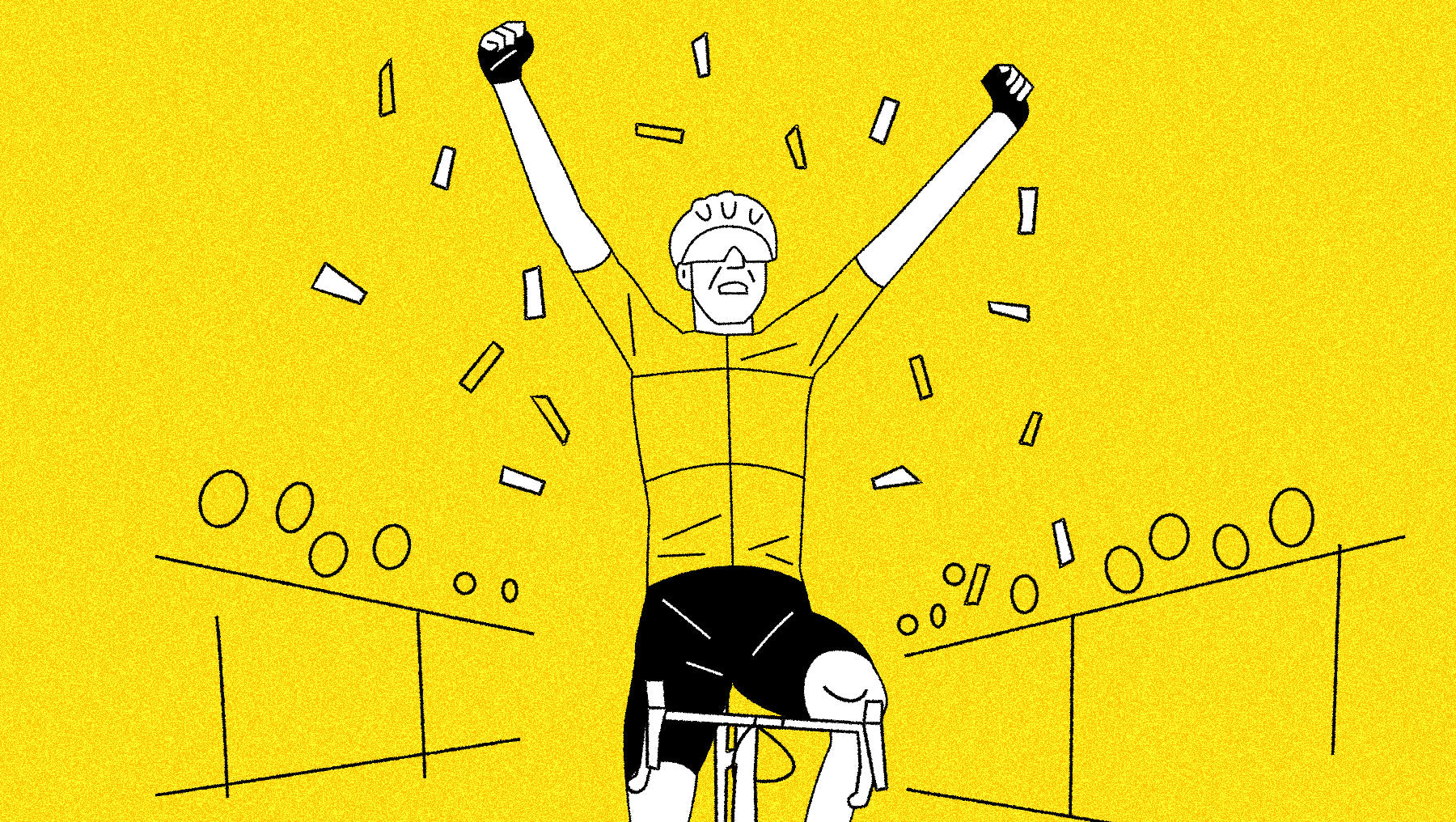
The Tour de France's yellow jersey is cycling's most prestigious award. The rider who wins it is typically an outstanding rider and a competent time-trialist.
This is the easy part: The famed yellow jersey. The individual rider who has the lowest combined time over the course of the race’s 21 stages wins the overall race — the General Classification (GC). Every stage is timed start to finish, and essentially every kilometer counts toward the final prize.
That yellow jersey was not awarded in the early days of the Tour, which started in 1903. It was first awarded in 1919, in a stroke of marketing brilliance. The yellow jersey matched race organizer l’Auto’s newspaper color. Since then, it’s been the Tour’s iconic hue.
Every day, the current leader of the race wears the yellow jersey, based on cumulative time taken at the end of the prior stage. For the majority of the 21-day race, it is easier and more efficient to ride in the peloton (the main group of cyclists). There are a few key moments when true GC contenders can gain time to win the yellow jersey, but for the most part, they prudently wait in the bunch and save their energy.
In the early years, Tour organizers toyed with a points system to award GC, rather than a cumulative time. They still award points, just not for the yellow jersey. Read on to learn about the different points classifications.
Riders to watch: 2020 & 2021 winner Tadej Pogačar, Primož Roglič, Geraint Thomas, Jonas Vingegaard, four-time champion Chris Froome, and Rigoberto Uran.
[newsletter]
How to win the race if you don’t “win” the race
Here is one of the first ways that the Tour de France trips up beginner fans. Unlike a typical sport where “winning” is a singular goal and achievement, there are multiple secondary prizes on offer over the course of the race’s three weeks. Some teams and riders don’t even bother vying for the yellow jersey and instead focus their energies on these prizes. As is the case with the yellow jersey, each day, a rider wears one of these jerseys in the race as the current leader in that classification.
Points Classification - Green Jersey
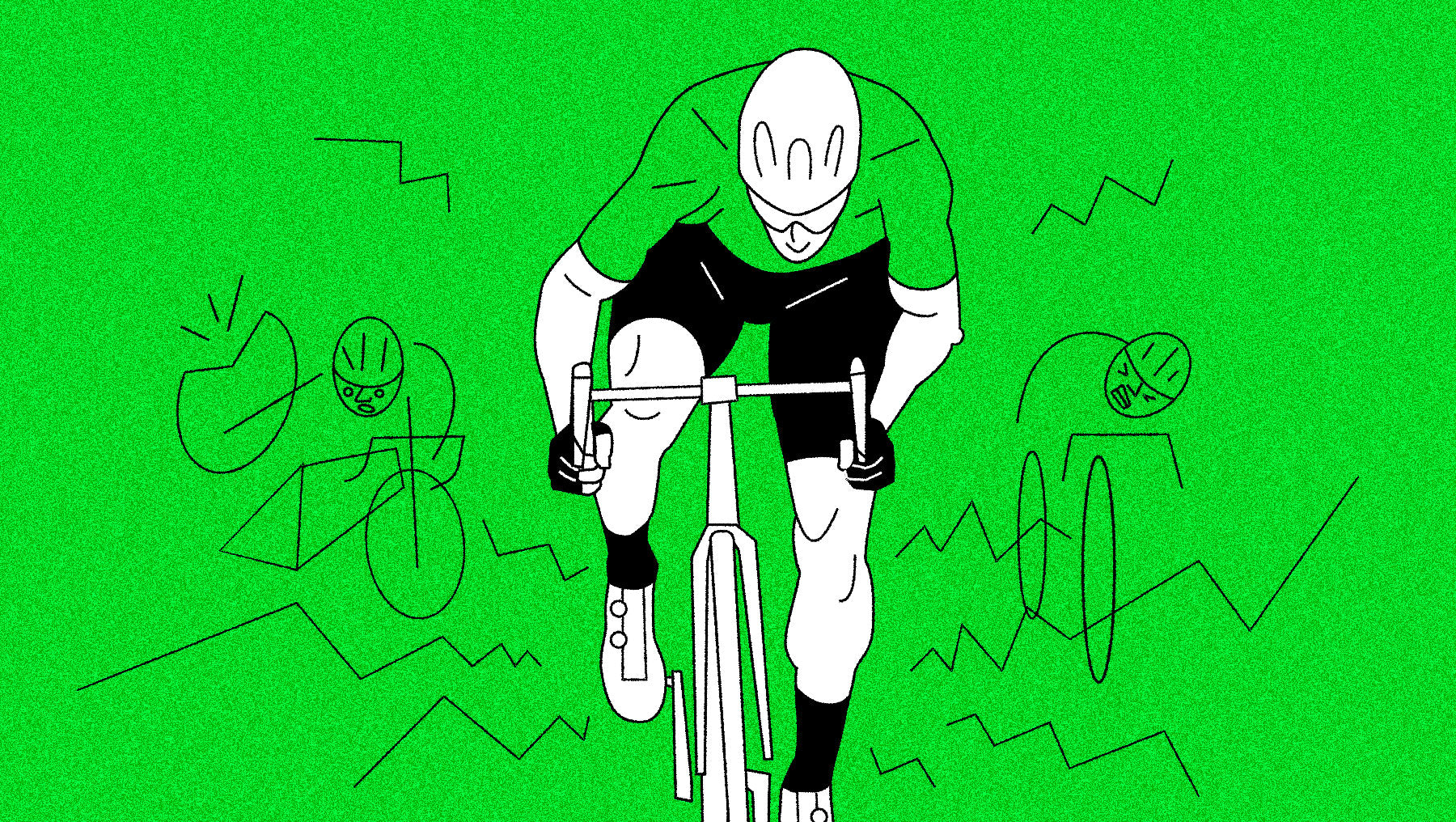
The sprinters own the road on flat stages, aiming to claim the green jersey as points classification leader. Peter Sagan is the only rider to win the prize seven times.
Colloquially known as the sprinter’s jersey, this award goes to the rider who scores the most points throughout the course of the race. Points are earned by finishing in the top-15 in a given stage. To tilt the classification in favor of “pure” sprinters (riders who tend to fall off the back on mountainous days), more points are offered in stages that the organizer deems to be “flat."
Plus, riders can earn points in mid-stage sprints that are usually stationed in towns to please the fans. These bonus sprints rarely decide the final green jersey, however.
Although this classification harkens back to the race’s early days, the green jersey was not introduced until 1953.
Riders to watch: Caleb Ewan, Fabio Jakobsen, Wout van Aert, Peter Sagan, Arnaud Demare, and Dylan Groenewegen.
[button]Shop road bikes[/button]
King Of The Mountains Classification - Polka-Dot Jersey
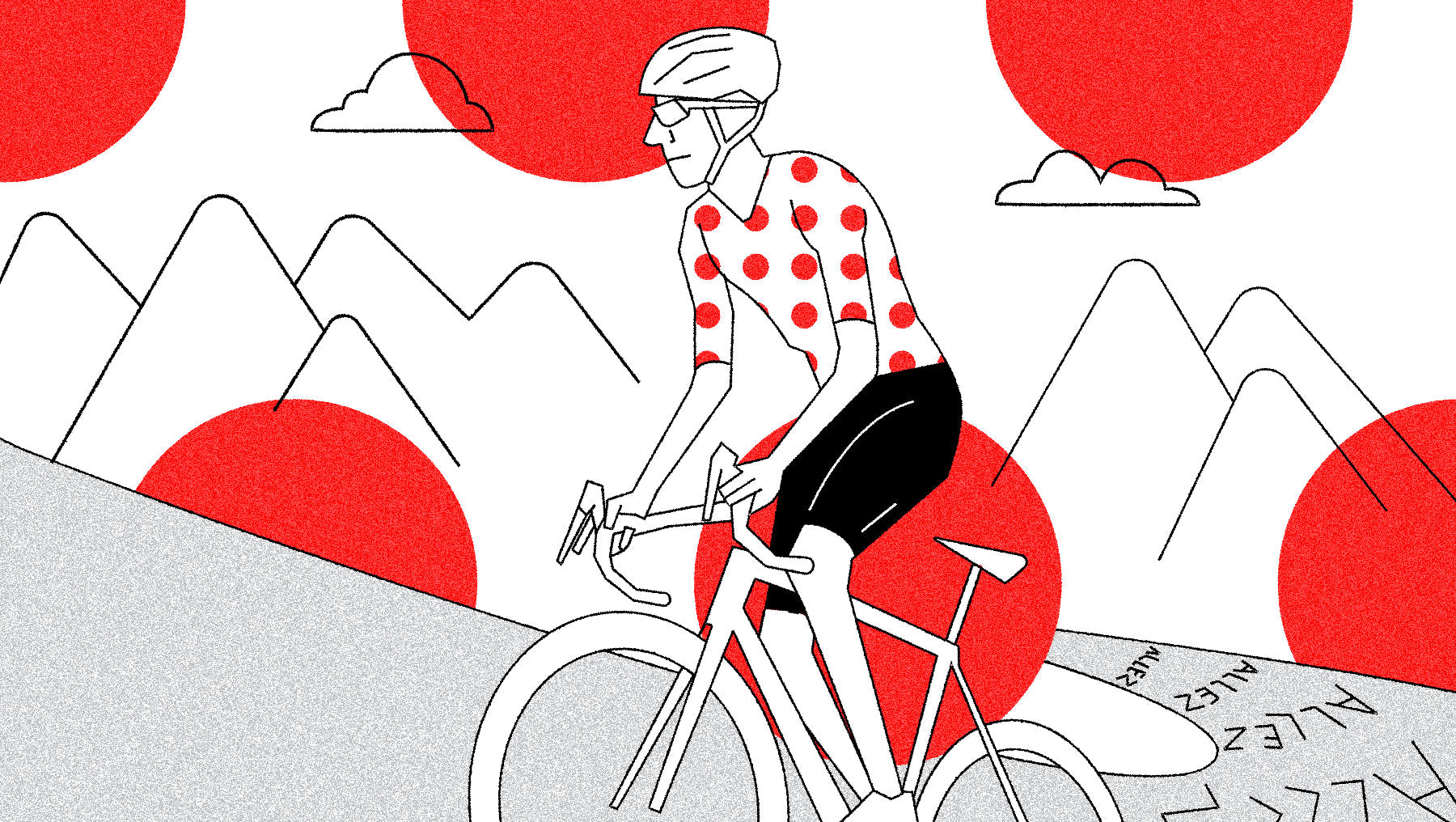
The King of the Mountains competition awards opportunistic climbers who escape in the Alps and Pyrenees and beat their rivals to the top of France's biggest climbs.
There was a time when the Tour de France didn’t even bother climbing major mountain ranges like the Pyrenees and Alps. Thankfully, race director Henri Desgrange sent riders over the Col du Tourmalet in 1910 and the rest is history.
The Tour began designating a “King of the Mountains” in 1933 to honor the rider who collects the most points over the course of the race on categorized climbs. The categorization system is opaque and subjective — sometimes a climb’s categorization is influenced by where it falls during a stage’s route.
What you need to know is that there are five categories: 4-1 and hors category (HC), which is French for “beyond categorization.” Riders get more points on harder climbs — those with lower numbers or HC. Riders also get more points on mountaintop stage finishes, especially if they win the day.
The gaudy polka-dot jersey came to be in 1975. Why polka-dots? As is usually the case with the Tour, it was all about the money! At that time, Chocolat Poulain was a race sponsor, and (you guessed it!) it packaged its bars in distinctive polka-dot wrappers.
Riders to watch: This one is tough to call until you reach the high mountains. Often anyone who’s in contention for the yellow jersey is a good bet.
[button]Shop road bikes[/button]
Other Prizes
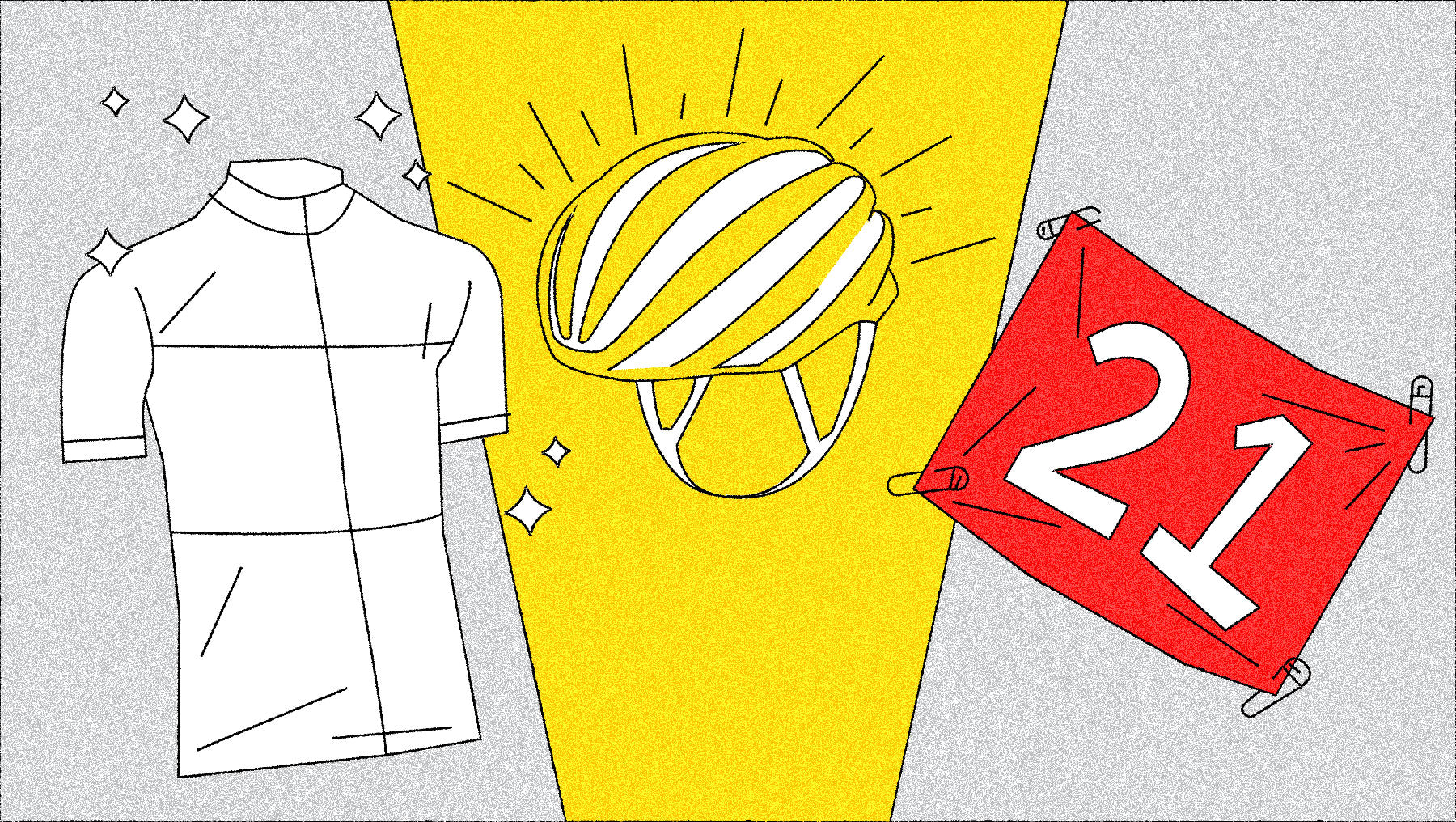
Can't hang with the world's best riders in the Tour's most difficult stages? Other awards are on offer for best young rider, best team, and most combative rider. It just depends on how you play your cards.
Best Young Rider Classification - White Jersey
This classification works the same way as the yellow jersey but only riders under 26 years of age. On rare occasions, like 2019, a phenomenal young rider will win both the yellow and white jerseys.
Riders to watch: Tadej Pogačar, Jonas Vingegaard.
[button]SHOP ROAD APPAREL[/button]
Best Team Classification - Yellow Helmets
Although this classification has been around since 1930, it usually doesn’t matter to the casual fan and only rarely influences how riders or teams race. Like the yellow or white jerseys, this award is given based on overall time in the race. Each team tabulates the finish times of its three best riders on every stage. At the end of the race, the team with the lowest overall time wins this prize. The team that leads this classification usually wears yellow helmets, helping them stand out in the bunch.
[button]SHOP ROAD HELMETS[/button]
Most Aggressive Rider - Red Number
Also known as the Combativity Award, this is likely the most mysterious prize in the Tour. In every stage (except time trials), a jury decides which rider in the race was most aggressive — usually, that means attacking a lot, gambling on a breakaway, or being French. Late in the broadcast, the announcers usually note which rider was given the combativity prize. If you spot a rider with a red number on their jersey, then he was named most aggressive the stage prior. At the end of the Tour, one rider gets the Super Combativity award.
An Individual Sport With Teams - Or Vice-Versa
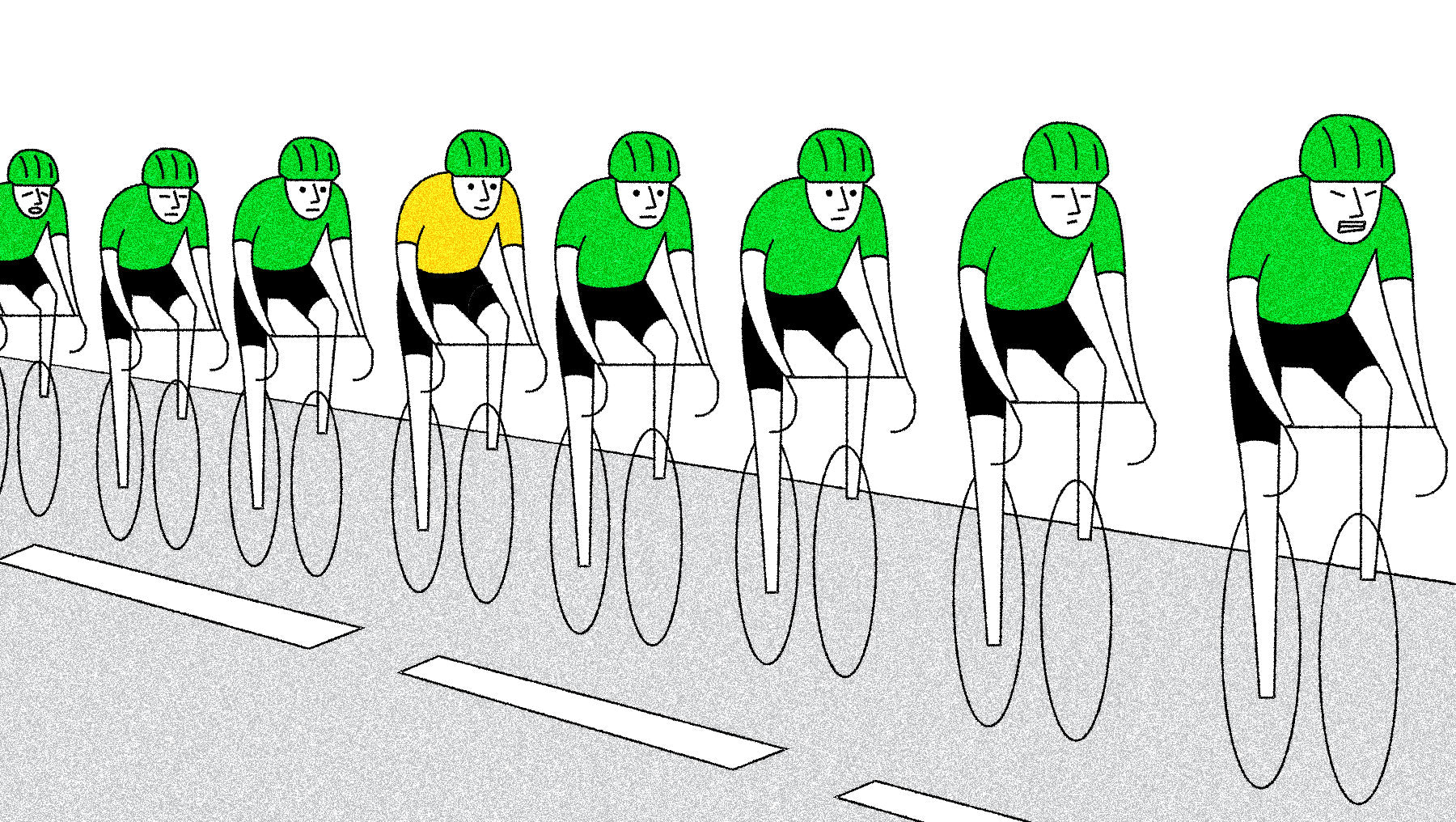
Teamwork can be obvious like a paceline of riders sheltering their leader from a headwind, or it can be subtle like giving up a bottle or a gel to make sure the leader doesn't bonk. Either way, it's essential to succeed in the Tour.
Why are there teams if only one rider can win the Tour de France? As alluded to earlier, professional road cycling has a curious tension between the team and the individual. The key thing to remember is this: If a cyclist wins one of the prestigious classification titles, or even holds a leader’s jersey for a single stage, it is viewed as a team success. Yes, only one guy ends up standing on the podium, but the overall team culture promotes this idea, provided the team isn’t dysfunctional.
So if only one rider “wins,” what do the other seven riders on the team do to contribute to this elusive concept of teamwork? Here are some ways a group of individual cyclists comes together as a team to support their leader:
- Getting into breakaways (small groups that attack off the front of the main group) — that way his team doesn’t have to work to chase the breakaway down.
- Chasing down breakaways — to give the leader a chance to win or place well.
- Retrieving food and water for the leader or other key riders — bottle service on the road … what could be more luxurious!
- Pacing the leader up key climbs — although drafting isn’t as crucial, it can be a psychological advantage to have a teammate at your side.
- Pacing the leader back to the peloton in the event of a crash, mechanical, or split in the group — without teammates to draft, it might be nearly impossible to rejoin the peloton on some fast-paced stages.
- Giving the leader their bike or a wheel in the event of a mechanical — this can often be quicker than waiting for a team car or neutral support to show up with a spare.
Strategies and tactics
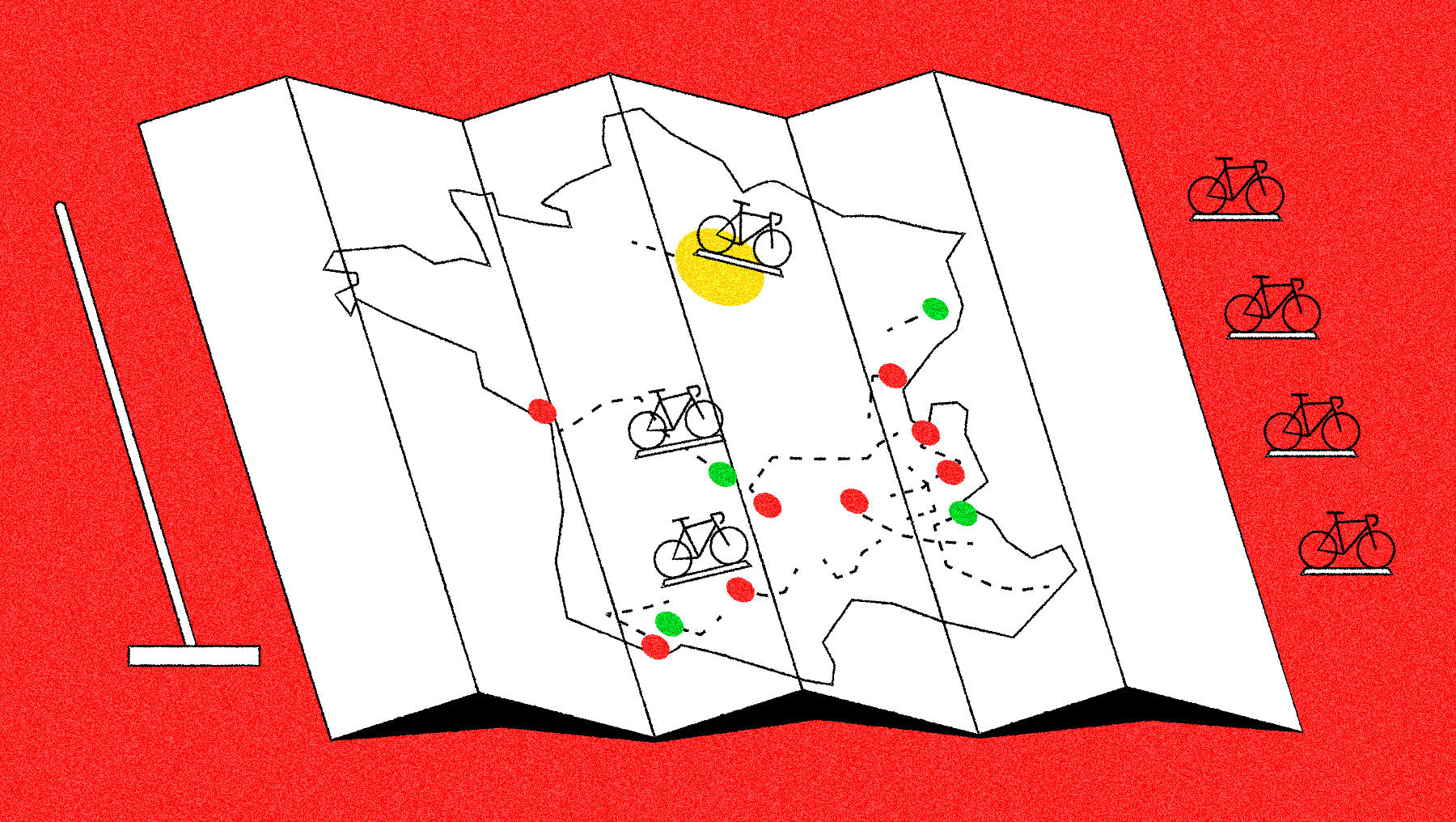
Yes, the Tour is a test of endurance, strength, and skill, but it's also a game that can be won or lost with the right strategies or tactics. The world's best teams pick the stages that suit their riders and try to strike at the perfect moment.
So we just covered some simple tactics riders can employ to help their team leader. How does it all fit together? Teams often settle on strategies prior to the race. They assess their strengths and weaknesses and find ways to succeed — whether that means winning the yellow jersey or simply wearing a King of the Mountains jersey for just one stage. Here are some examples of how teams might set their strategies, and how they might execute them with the right tactics:
Team with a top GC rider: Naturally, they’ll try to win the yellow jersey. This means surviving inconsequential flat and rolling stages to conserve energy for key mountain stages and individual time trials. The leader’s teammates will try to get into breakaways so that their team won’t spend energy chasing all day. They’ll also set up the team leader to attack on key climbs or at least follow his rivals to defend his position.
Team with top sprinter: To win the green jersey, they’ll target the flat stages. This means controlling the peloton and chasing down breakaways to set up a sprint finish. Like the GC team, they might also put a rider in the breakaway to ease the burden on the team, forcing rival sprint teams to chase. On mountain stages, the team might have to call riders back from the peloton to help pace their sprinter to the finish so he doesn’t get time-cut.
Team with top climber: Winning the King of the Mountains (KOM) classification is often less of an obvious team effort. These pretenders to the throne tend to be opportunistic. However, it is advantageous to have a teammate in the breakaway on a key mountain stage when points are up for grabs. Also, when defending the polka-dot jersey, teammates can contest the climbs and finish ahead of KOM rivals to spoil their attempt to take over the classification lead by scoring points.
Smaller team without top leader: These are the teams that always try to put a rider in the day’s breakaway. This could earn them the Combativity Prize, or if they play their cards right, a stint in a leader’s jersey or even a stage win. This strategy requires constant attacking in the early kilometers of the race — something most fans rarely see on the broadcast. It is a hectic, painful part of the stage, but it’s crucial in establishing a break. Meanwhile, a breakaway rider’s teammates might patrol the front of the peloton to disrupt the chase.
[button]Shop road bikes[/button]
Three Tips To Watch Like A Pro
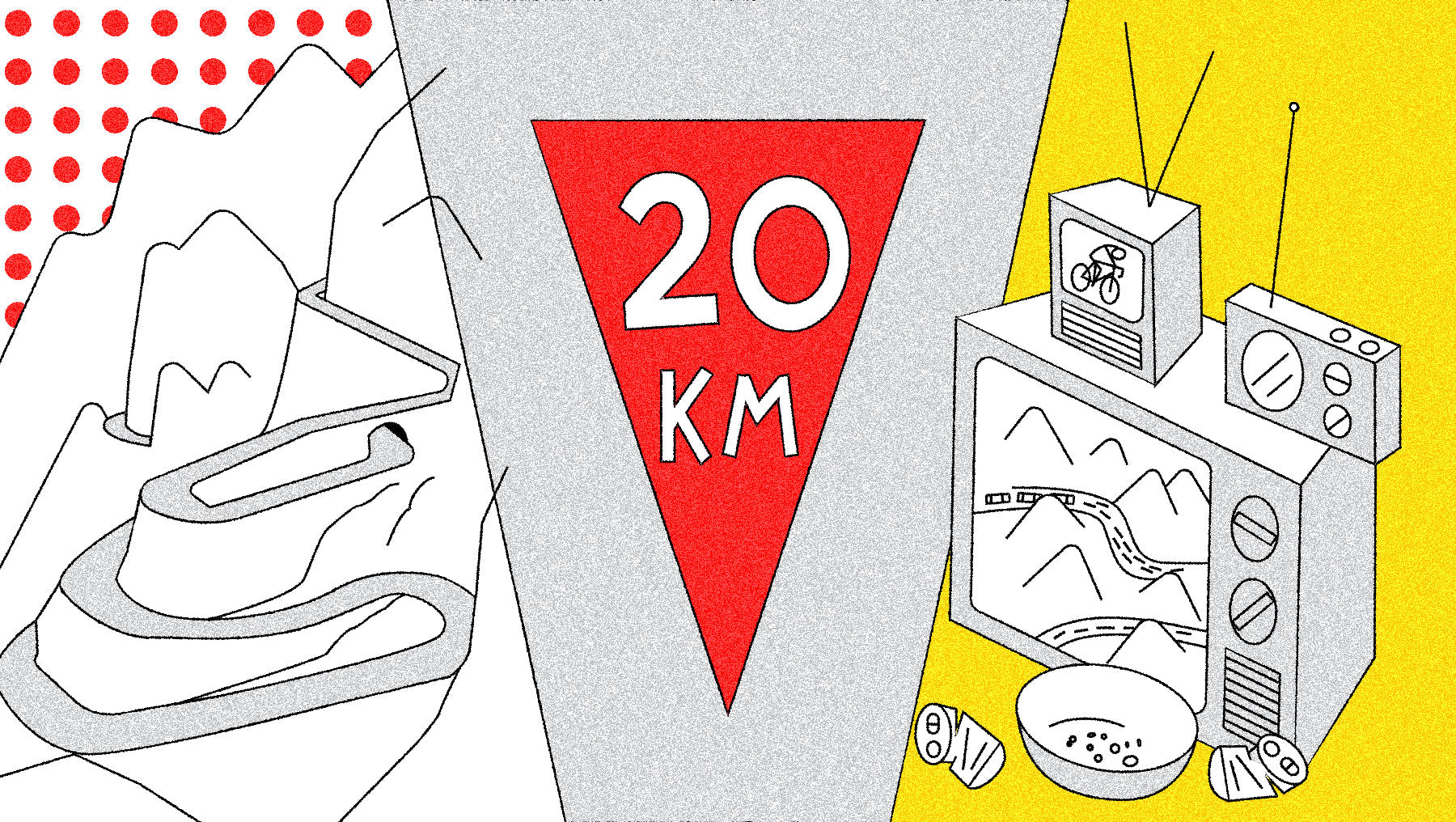 The Tour de France is a curious mix between nailbiting thrillers and snoozy days in the saddle. You never know what each stage will hold, but there are a few ways you can plan ahead to catch the action as a cycling fan.
The Tour de France is a curious mix between nailbiting thrillers and snoozy days in the saddle. You never know what each stage will hold, but there are a few ways you can plan ahead to catch the action as a cycling fan.
Now that you understand the basics of how the Tour de France is raced, what do you, the new cycling fan do? NBC Sports boasts about 350 hours of Tour broadcast, including live, primetime, and encore coverage. There are daily stages for three weeks. That’s a lot of cycling! Fortunately, you don’t have to put your life on hold to watch the Tour de France. There are some reliably important stages you can focus on to catch the key action.
Can’t watch daily? Pick the key mountain stages. There are usually about 5-8 key mountain stages when the overall race is won and lost. Most of them are summit finishes, and they’re split between France’s two key mountain ranges: the Alps and Pyrenees. The first few ordinarily come in stages 6-9 before the first rest day, and the second round is often scheduled for the final week of racing. Occasionally, another summit finish, such as Mont Ventoux in Provence, will be on the list of important stages.
Watching daily? Tune in when things really heat up. On most flat stages, you can wait until the final 20 kilometers to tune in and see the sprinters fight it out. Some rolling stages might be entertaining in the final 50-60 kilometers if late breakaways occur. On mountain stages, it’s best to start watching as early as possible because sometimes, crazy things happen on the day’s first climbs.
Watching a LOT of TDF? Look for the nuances. If you’re going to have the race on all day, every day, you’ll need to dig a little deeper to enjoy the subtleties of the race. Try keeping track of riders who are often making the breakaway. Watch the sprint teams work together — or not — to chase an escape. Who looks to have strength in numbers, and who is not present at the front of the race? Are the GC riders staying out of trouble or tail-gunning at the dangerous back of the peloton? Usually, at any given time in the race, any given rider is positioned where they are for a specific reason. Look for clues to sort out what is happening.
[button]Shop road bikes[/button]






















